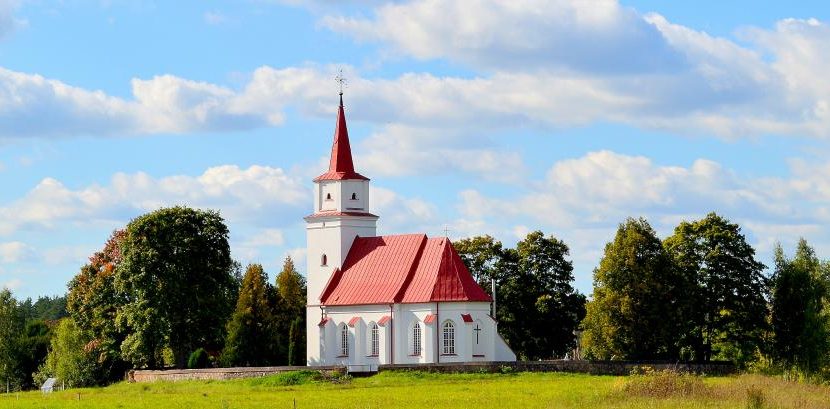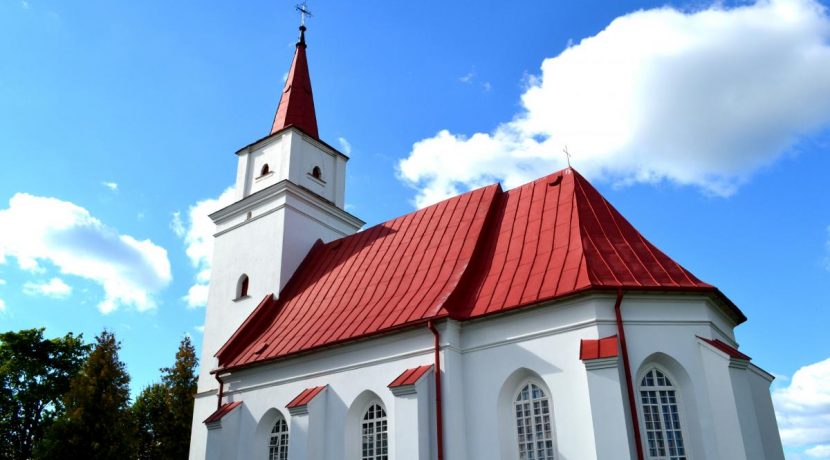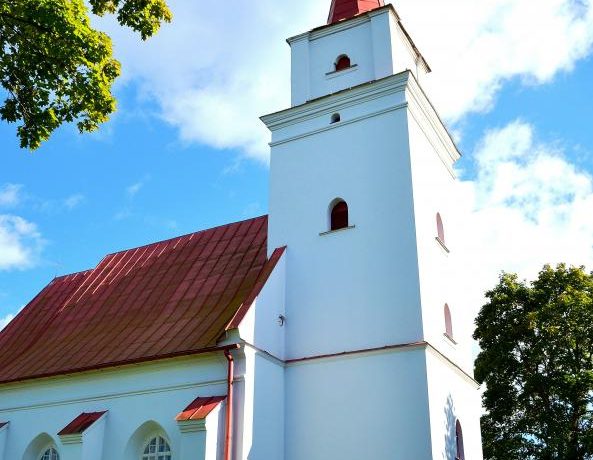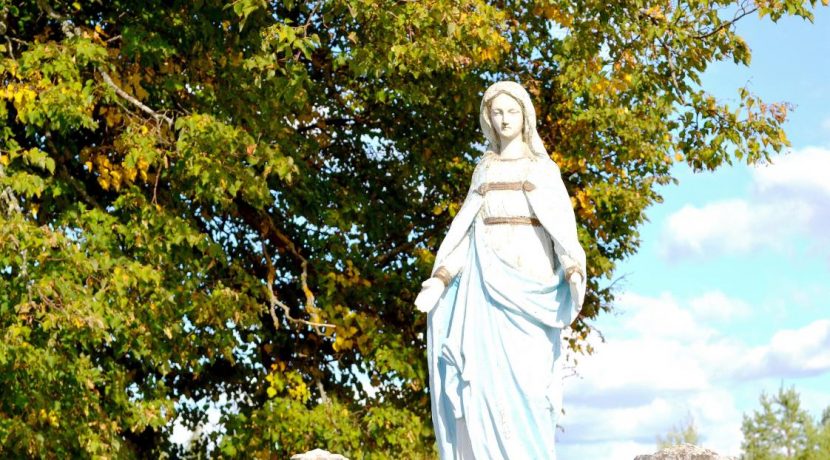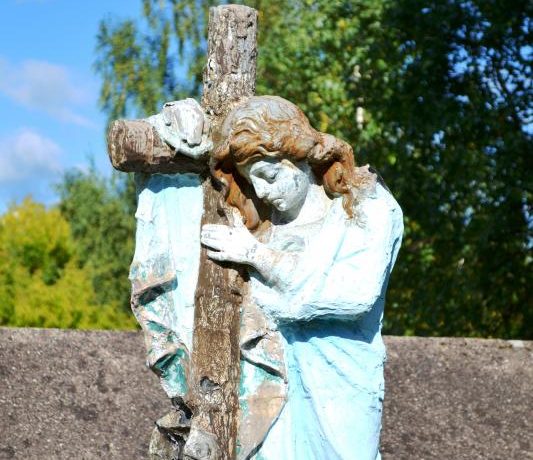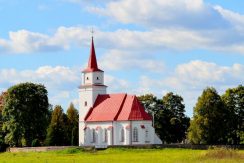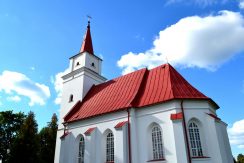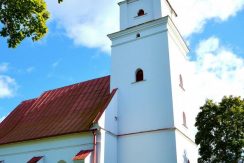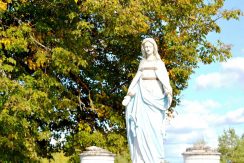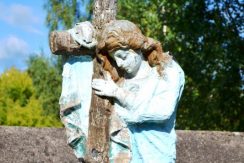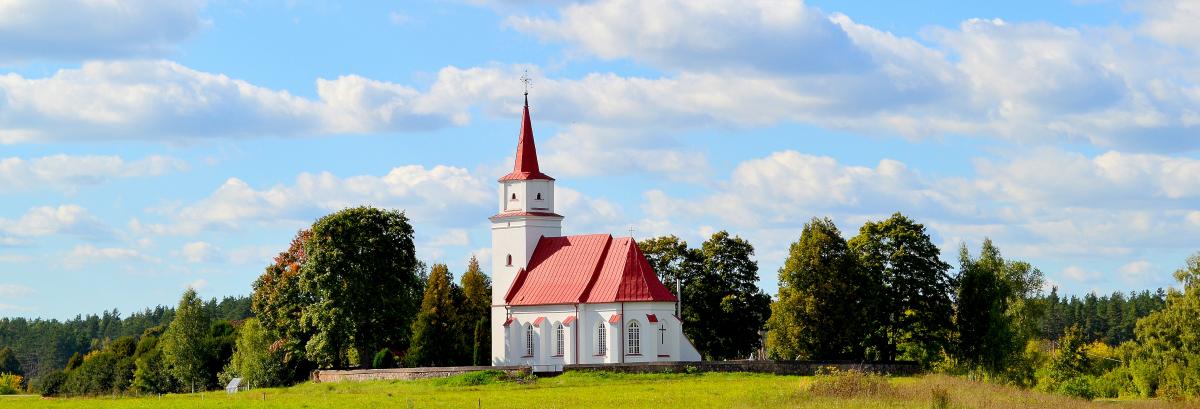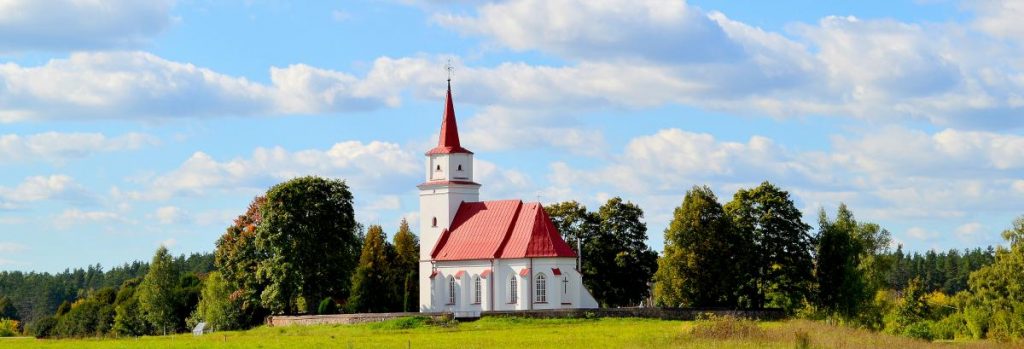The building of the Elernes Church was constructed in 1650 by Heinrich Tienen. Until 1761 it served the needs of the Lutheran Church, but later the Lutherans exchanged with Catholics with the Sīkele Church. The architecture of the church, in both volume and details, is in correspondence with other churches that were built in the territory of the Courland Duchy of that time.
History of the Church:
In Elerne (Elksni) initially there was Lutheran parish. Building of its wooden church is connected with the recess of duke of Kurzeme – Godthartt Kettler – in 1567. In 1636 the church was reconstructed. Present-day stone church was built in 1650 on initiative of local landlord Heinrich von Thünen. Catholic parish here was established in 18th century. In 1732 Elerne came in possession of Mayor General Georg Christoph von Witten. After Witten changed his faith to Catholic one, the last Lutheran dean served here until 1742, but in 1761 building of Elerne church was completely delivered in charge of the parish. Lutheran parish moved to Muravki (Sikele), where in 1819 in place of old wooden church was built a new one – Sikele Lutheran church.
In 1761 in general visitation of Catholic churches there is no mentioning about the consecration of Elerne church (there is no mentioning about it in 1800 too). According to general visitation it appears that in the church there was an altar inherited from Lutherans. Altar was a two-storeyed coloured and gilded construction, decorated with woodcuts. It had two mouldings (“The Last Supper” and “Annunciation of Mary”) and figurines of apostles Peter and Paul, made of wood. There also is mentioned a pulpit that is decorated with sculptures, light blue confessional and a masters’ chair of the same colour, as well as organ gallery with painting on railing slats (until 1761 the organ, that was built in 1648, already experienced repairs). At that time on church’s windows and walls there also were depicted coats of arms. In 1800 it was stated that almost all the furnishing have preserved its original appearance, including old broken-down organ and two side altars. Fragments of woodcarving of the second half of 17th century (altar’s side décor of acanthi ornament, image of the Christ, figurine of pelican) in the church could be observed still in 1930s; nowadays these fragments are lost.
The building of Elerne church preserved its original appearance without essential changes and rebuilding. In 18th century in the church there was built the sacristy, but in 1911 – tower’s steeple. In 1968 there were partly rebuilt vaulted cellars that initially served as a sepulcher.
The church is one-nave hall type building. In the plan to almost square parish room there is attached polygonal, wide completion, but in front of the facade there is tetragonal tower’s nave. Church’s outwalls are divided by line of counterforts, their verticality are stressed by pointed vault window openings. The building has span roof, three-storeyed roof is crested by slender steeple.
Church’s parish room and antechamber are covered by gorgeous stellar vaults with cradling, which are supported by consoles with grape bunch and cone motifs created in their mouldings. In organ gallery, that is built above the entrance, there is neo-gothic style organ (six registers, one manual), made in the end of 19th century in Daugavpils (master – Schultz).
Gallery’s railing has baluster with woodcarving made in the middle of 17th century in mannerism style and slat frames. Organ has several fragments of antique (17th century) décor (ornaments, angels’ heads). The church has three wooden altars. Central altar is made in neo-gothic style, side altars located near triumphal arch – in neo-renaissance style. One side altar has woodcarving of the middle of 17th century – relief of the image of “Annunciation of Mary”, next to it there was the relief of “The Last Supper” that nowadays is kept in the museum of Rundale palace. Small bay type wooden pulpit (19th century) is decorated with applicative ornaments typical to Historicism period. On St.George’s altar made in 1878 there was the painting with the image of St.George (this example of local artisanal painting of 19th century now is kept in the museum of Rundale palace). Silvered and gilded monstrance was presented to the church by Julijs Savickis in 1849; among the inventory of the church there are silver goblets forged by K.Volkov in 1891 and 1892. There also are remained tin candlesticks made in baroque style and tin reliquary made in 18th century. In the church there were two chasubles sewed in second half of 19th century, but two crucifixes represent local artisanal wood-carvers’ work traditions of turn of 18th and 19th centuries. Pieces of works of the end of 19th century – two processional floats and two chandeliers – are made in neo-style.
Elerne Catholic church is important landmark baroque period. Its peculiarity is flexible forms of naves of sacral buildings typical to Kurzeme, and sustained and powerful use of gothic traditions. Fragments of furnishings testify about local woodcarving’s heritage of mannerism and baroque periods.


